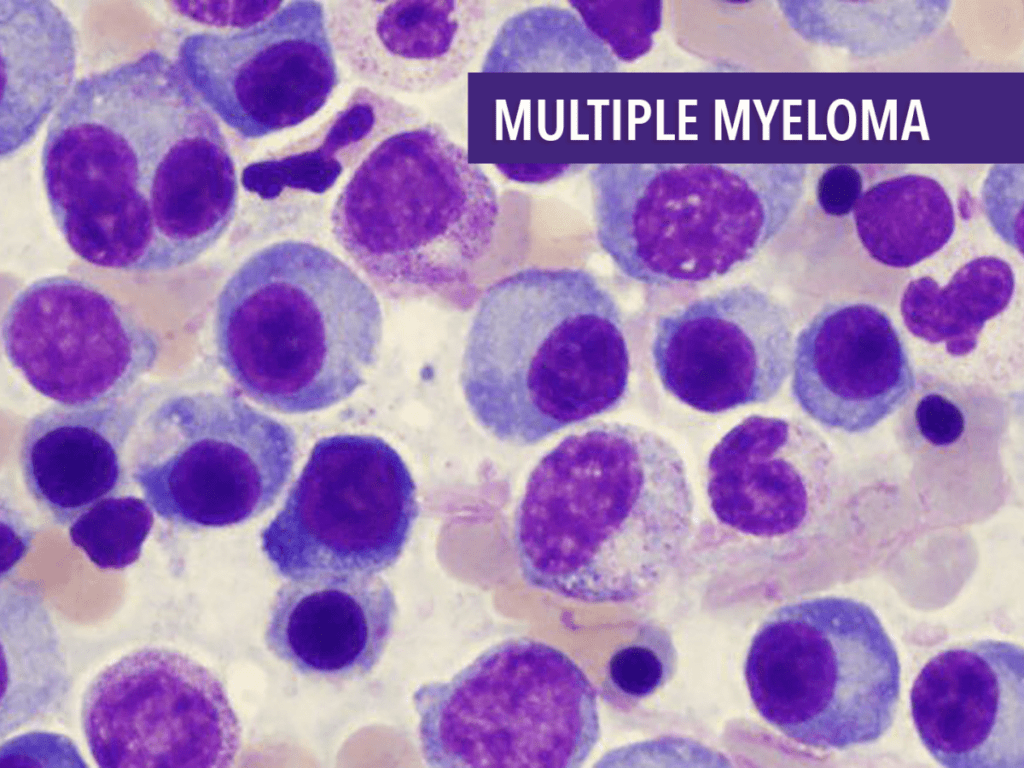MULTIPLE MYELOMA
What is Multiple Myeloma?
Multiple myeloma, which is known as Kahler’s disease, is a type of cancer whereby the malignant plasma cells in bone marrow begin to grow out of control and affect the body’s blood-forming system that may cause tumors, kidney damage, bone destruction, and impaired immune function.
A cancerous plasma cell (myeloma) can multiply rapidly. That is the reason it is called “Multiple Myeloma”.
Normal plasma cells take place in the bone marrow and have an important role in the protection and improvement of the immune system. When a plasma cell turns out to be cancerous and starts to multiply, it reduces the production of healthy blood cells such as red blood cells, white blood cells, and platelets.
The exact cause of multiple myeloma is not known but there are certain things such as age, gender, family history, and obesity that may affect the development of the disease… Multiple myeloma usually becomes apparent after the age of 65 and is more common among men. Individuals who have a family history of multiple myeloma are 4 times more likely to develop the disease. Obesity is another factor that may cause multiple myeloma. Exposure to radiation, or chemicals in pesticides and fertilizer may also cause multiple myeloma.
Individuals who have plasma cell disorders such as monoclonal gammopathy, solitary plasmacytoma, and smoldering myeloma are more likely to develop multiple myeloma. Also, having heart disease, Type 2 diabetes, and rheumatoid arthritis is found to be a factor that leads to multiple myeloma.
What are the Symptoms of Multiple Myeloma?
Multiple myeloma has many symptoms, but the first common symptom is bone pain. Other symptoms may include:
- Weakness and/or numbness in the arms and legs
- Fatigue,
- Nausea and vomiting,
- Constipation,
- Unexplained weight loss,
- Unexplained fever,
- Bruising or bleeding easily,
- Feeling confused or “foggy,”
- Loss of appetite,
- Excessive feeling thirstier than usual.
- Frequent infections
Treatments for Multiple Myeloma in Turkey (Türkiye)
Treatments for “Multiple Myeloma” in Turkey are performed by highly experienced hematologists, oncologists, bone marrow transplant specialists, pathologists, and radiologists. Turkey is an attractive destination with fully equipped and experienced healthcare providers. Each year there are lots of individuals from Europe to Asia who travel to Turkey to get Multiple Myeloma treatment.
Treatments for “Multiple Myeloma” in Turkey change due to several factors, including the type and stage of cancer and the general health of the individual.
The treatment for multiple myeloma in Turkey will be customized to the individual’s particular needs. Chemotherapy, targeted therapy, immunotherapy, radiation therapy, stem cell transplants, and plasma exchange are the treatment options that individuals may get in Turkey.
Chemotherapy is the first option to treat multiple myeloma in Turkey. Chemotherapy helps to kill fast-growing multiple myeloma cells.
Targeted therapy is the treatment that focuses on the blood vessels that feed the tumors. With the targeted therapy the growth and spread of the tumor are blocked.
Immunotherapy is the treatment that uses the individual’s immune cells to fight off cancer cells. The drugs used for immunotherapy help to improve the immune system and trigger the immune response to fight off cancer.
Radiation therapy is another option that can be used as a primary treatment or combined. Radiation therapy helps to prevent nerve compressions, release pain and decrease the risk of fractured bones. Besides, it can kill cancer cells in a specific area quickly.
Stem cell transplants are the procedure that leads to replacing defective or damaged bone marrow cells with the individual’s own healthy blood-forming cells. This procedure is generally combined with chemotherapy to kill off the diseased bone marrow cells.
Plasma exchange is the treatment performed by the liquid component of the individual’s blood (plasma), removal, and replacement with normal plasma from a healthy donor.
For further information and treatment please contact…

